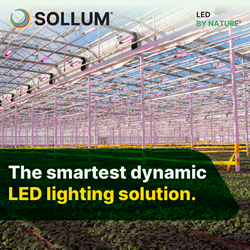Soil health resources for solar development are provided in the new fact sheet from the Center for Rural Affairs
The newly released fact sheet, “Soil Health in Solar Development,” provides practical guidance for developers, landowners, and communities constructing solar sites with soil conservation in mind. It highlights strategies such as low-impact construction methods, native vegetation establishment, and dual-use solar practices.
LYONS, NEBRASKA — As solar energy projects continue to grow across the U.S., a fact sheet from the Center for Rural Affairs outlines how new development can be designed to protect soil health, reduce erosion, and maintain long-term agricultural productivity.
The newly released fact sheet, "Soil Health in Solar Development," provides practical guidance for developers, landowners, and communities constructing solar sites with soil conservation in mind. It highlights strategies such as low-impact construction methods, native vegetation establishment, and dual-use solar practices.
"Well-designed solar development can protect the long-term viability of agricultural land that is used for solar sites," said Alex Delworth, senior policy associate with the Center for Rural Affairs. "As more solar is developed in agricultural settings, it is important to support soil health so that at the end of project life the land can be returned to agricultural production, if desired."
One recommendation is to use low-impact construction practices that minimize soil disruption. This includes preserving topsoil, avoiding grading, and adapting panel leg height to the land's natural contours. These approaches contrast with conventional methods that often involve topsoil stripping, soil compaction, and vegetation removal.
Establishing native vegetation beneath and around solar arrays is also important for erosion control, according to the fact sheet. Deep-rooted perennial native plants anchor soil, improve water infiltration, and help minimize stormwater runoff. Compared to turfgrass or gravel ground cover traditionally used on solar sites, native vegetation offers long-term erosion control and helps store carbon in the soil.
"When carefully planned and managed, solar energy projects can minimize impacts on soil quality and ensure optimal outcomes," said Delworth.
Additionally, the fact sheet talks about the value of dual-use solar practices. Co-locating solar panels with agriculture, such as grazing livestock or growing crops, can keep land in agricultural use while maintaining and enhancing soil health.
To read and download a copy of "Soil Health in Solar Development," visit cfra.org/publications.
Featured Product

